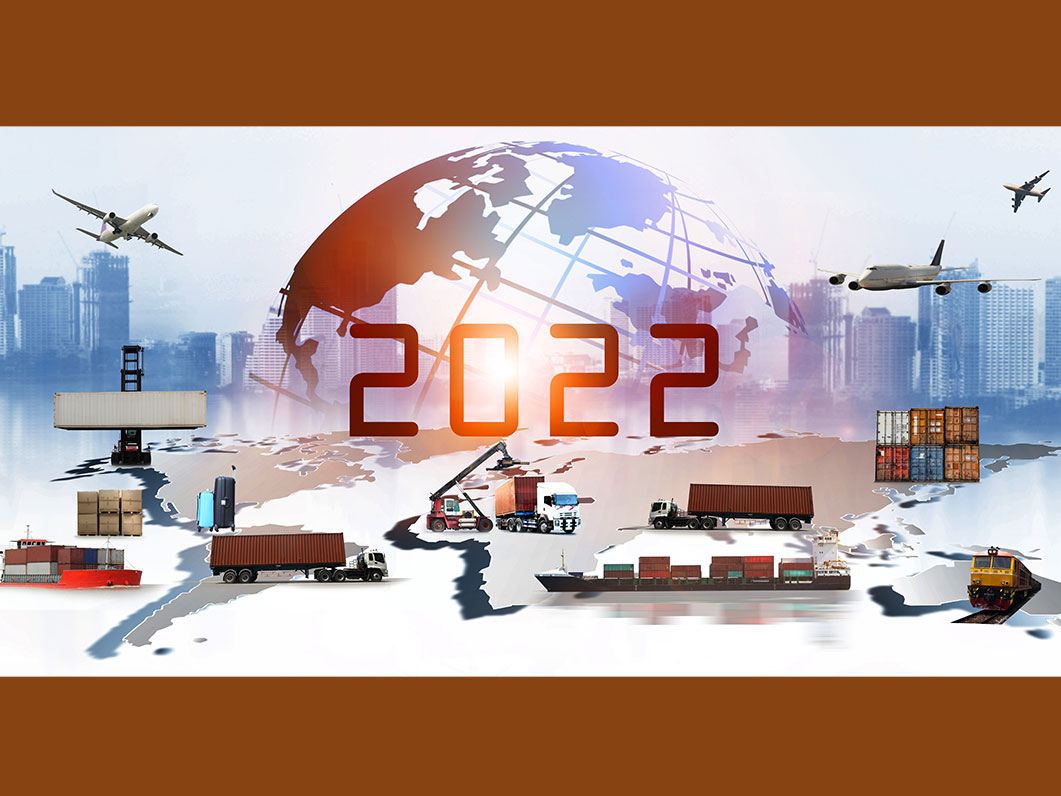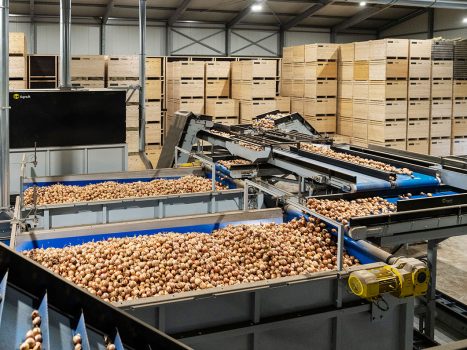A recent article posted at Forbes online at https://www.forbes.com/sites/stevebanker/2022/01/05/supply-chain-predictions-for-the-coming-year/?sh=73b4585f6e0b and written by contributor Steve Banker takes long look at the current supply chain matter and makes a few predictions on what might transpire in 2022.
In his Jan. 5 piece entitled “Supply Chain Predictions for The Coming Year,” Banker said that while supply chain disruptions will lessen, they will remain “substantial.”
He wrote, “Supply chain disruptions, product shortages, and inflation are top of mind for the average consumer today.” He cites the causes: 1.) “Fiscal stimulus leading to increased demand for goods; COVID restrictions made demand much more unpredictable. Demand for restaurant supplies, for example, crashed. Meanwhile, demand for goods bought in grocery stores soared.” 2.) “The demand surge in North America exacerbated the imbalance of trade. Much of what is consumed in North America is made in Asia, particularly China. This led to port congestion, container shortages, and skyrocketing costs for shipping.” 3.) “Factories, ports, and even entire cities closing due to Covid. This led to supply disruptions.”
Banker said, “With the end to fiscal stimulus and consumers permitted to move more freely, demand will become more predictable. Some of the demand surges, however, created capacity shortages that will not end in the coming year. It takes several years, for example, to build semiconductor plants. Many goods that have chips as a component will remain in short supply through 2023 or even 2024. Cars and trucks are perhaps the best example of this.
“Port congestion will slowly unwind during the year. But we can expect continued supply shocks due to COVID. China, for example, recently shut down Yuzhou, with its population of 1.1 million, after just three cases of COVID were found. Any company relying on components from a factory in a city that is shut down will be affected. The effects are even bigger when port cities in Asia are closed.”
Moreover, Banker said, “We are also in a very unsettled political environment. Embargos, new tariffs, bans on the use of products built by newly sanctioned companies, and behind the scenes governmental pressure on who companies can buy from and sell to, could all disrupt trade between Russia, China, and the West at a moment’s notice.”
He added, “In short, COVID-19 impacts will be with us to one degree or another for some time. However, the impacts will diminish in 2022.”
One negative factor is inflation, he said. “The current high rate of inflation places cost pressures on companies as they are forced to pay more to retain their workers and pay more for the goods they procure. Companies typically cannot pass 100 percent of the increases onto buyers.
“Companies can increase resilience by procuring goods from more suppliers. This costs money. Many companies will be hindered in becoming more agile and resilient by the inflationary environment we are in.”
He said that companies “can also use supply chain design solutions to fully understand the costs and tradeoffs associated with multi-sourcing strategies. There is little downside to using these tools. But it takes time to complete these projects, often several months. This is particularly true for companies new to this technology.”
Of course it “takes time to implement the findings. For example, bringing a new supplier up to speed and making sure they can produce goods at a desired quality level and deliver them on-time in full reliably, is a process that can take more than a year.
The result is that while top executives finally understand the need for resilience, many companies will make much less progress on this front this year than they desire.”
The “need for speed” was recognized during the pandemic, which “rewarded companies that could move fast and punished those that could not.” Banker said, “Agility is now talked about at the board room level. Supply chain digitization efforts are now focused on gaining end-to-end visibility from the supplier’s supplier to the customer’s customer. The pandemic made it clear that there was a need for collaboration. Supply chain collaboration networks (SCCN) are getting increased attention as a critical component in building robust supply chain control towers.”
Companies “who have embarked on the control tower journey are discovering just how difficult they are to build,” he said. “The key building blocks for the modern supply chain control tower include data from key supply chain partners, robust supply and demand planning, and a master data management/data harmonization layer that helps to normalize the data and can then feed accurate data to the planning engine or team members. Companies embarking on a control tower journey can implement a solution in the coming year, but it will take many companies several years to get to robust capabilities in terms of agility.”
The upshot is to “embrace the need for speed.”
Banker also looked at the shift in labor and “want not need.”
He said, “The number of people quitting their job in the US is the highest on record. On Tuesday, the Bureau of Labor statistics reported that 4.5 million workers voluntarily left their job. That is up from a still staggeringly high 4.1 million workers who quit in October. It is primarily low paid workers that are taking advantage of strong employer demand to pursue better opportunities.”
He said, “Factory and warehouse workers are often in low-paid, physically demanding jobs. The rate of e-commerce growth and the resulting warehouse labor requirements is substantially greater than the growth in the labor pool.”
And while trucker drivers do not face low pay, they “do have a challenging job with long hours. The ongoing truck driver shortage is not going away, as more drivers retire, and companies continue to struggle to hire a younger workforce. Just how bad is the driver shortage? According to the American Trucking Associations (ATA), the trucking industry is currently short 80,000 drivers. The ATA has a National Private Truck Council that allows for benchmarking on driver turnover. In the last benchmark, truckload carriers with more than $30 million in annual revenue averaged 90 percent driver turnover.”
Banker said, “It’s time to shift the dialog about labor and supply chain jobs. It’s not about the availability of jobs and workers. It’s about work appeal and interest in work. Simply stated, supply chain jobs need to be more competitive with alternatives. Doing so will require higher pay and benefits to attract workers, and both higher pay and a better work environment to retain workers.
“Warehouses are likely to address the increasing workloads with a combination of labor and automation. Working with modern automation and robotics offers labor pools with an interesting work environment, exposure to modern technology, and the development of skills that will likely be in growing demand in the future.”
Moreover, he said, experience “with modern computing technology, in the form of handheld operating systems, also develops transferrable skills that will more likely be desirable by future employers. Adoption of modern technology in these ways can increase the quality of work, offer the development of more transferrable skills, and increase labor retention. These functional improvements, in conjunction with more competitive compensation, will likely be necessary to attract and retain workers.”
And there’s the advent of autonomous trucks, with Banker said, “On the driver front, autonomous trucks using convoy technology will be on the road this year in small numbers. Fully autonomous trucks for the middle mile will hit the road, again in small numbers, in 2024. In short, the driver shortage can’t be solved with automation in the short term. Truck drivers need to be treated better.”
He also addressed Artificial Intelligence, saying it will “continue to be, a key component of autonomous trucks. But is also a key part of transportation management systems (TMS). Aside from improved ETAs, AI plays a role in other aspects of transportation management. Shippers learn which carriers meet on-time service levels and which do not, which lanes typically carry more chance for delays, and whether there is an optimal number of stops before shipments become late. AI aids shippers in better understanding how to drive efficiencies without sacrificing service levels.”
AI has also entered the realm of dashcams, which will “monitor the driver while also using data to help the driver make better decisions. AI video telematics are combined with vehicle cameras and sensors to understand what is happening both inside and outside the truck in real-time to make for a safer and more efficient trip. The data that is collected, can also be used to help with infrastructure planning and development. This can be combined with data available to a TMS to better understand which roads are safe or unsafe, which roads have low bridges, and which roads have the least traffic. While autonomous trucks might be the future most people are looking for, AI-enabled dash cams for safer trucking is the new reality.”


